DPZ at CNU32 – Cincinnati, OH
As DPZ partner Matt Lambert assumed his new role as chair of its board of directors, the 32nd Congress for the New Urbanism (CNU) annual conference took over downtown Cincinnati, OH, in mid-May. Quite appropriately for a 19th Century city that has witnessed the rebirth of many historic neighborhoods, the theme was restorative urbanism. Many of the sessions focused on the management, design, and policy tools new urbanists are employing to bring about much-needed revitalization in our urban cores.
DPZ helped “restore and energize” the attendees once again with our #NotABooth coffee lounge. While not taking in the sights of new and old urbanism in the area, DPZers were moderating sessions, participating in panel discussions, and sharing some of DPZ’s architectural and urban know-how in special presentations.
Cincinnati: Lessons from a Re-energized 19th Century City
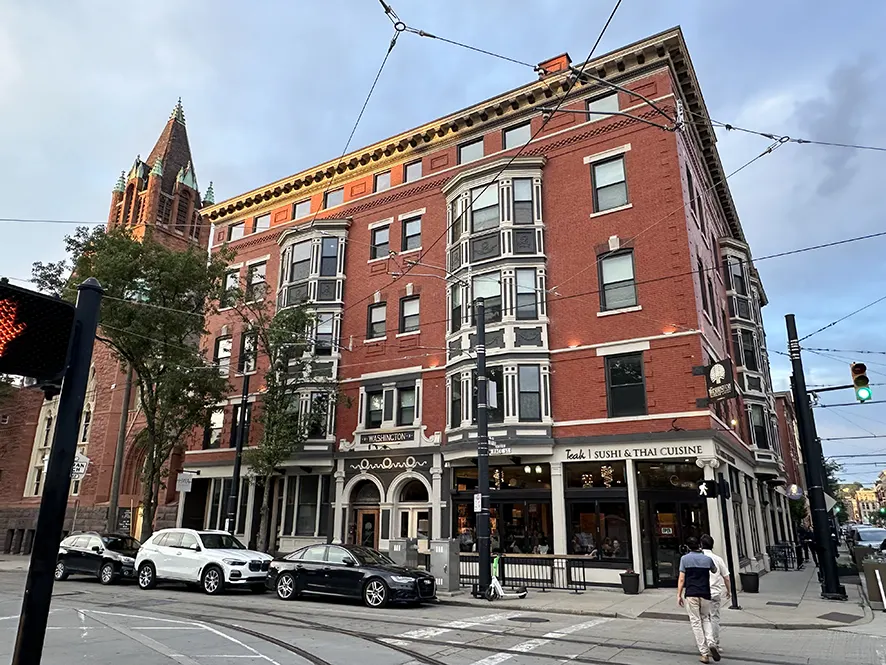
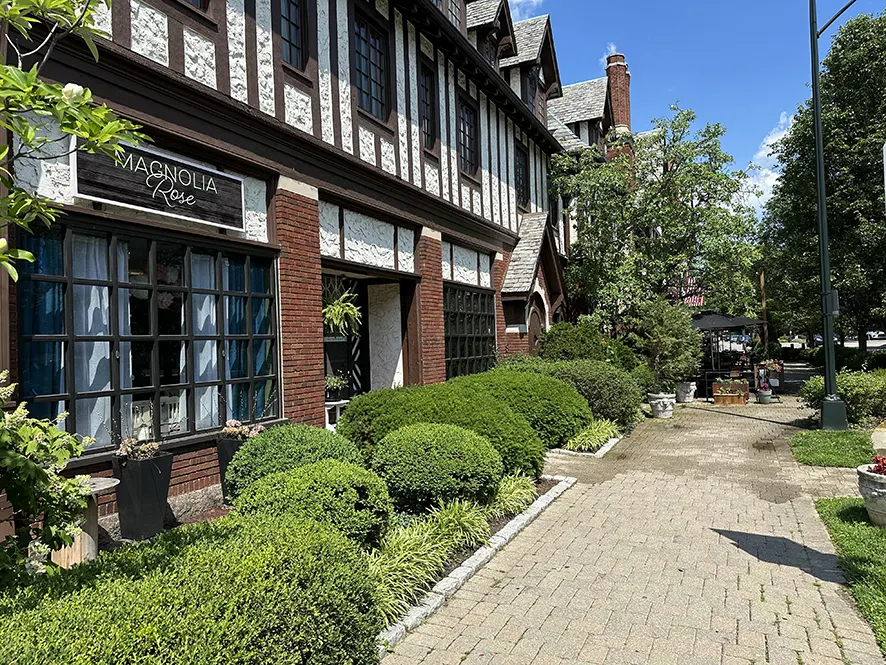
Cincinnati’s Over-the-Rhine (left) and the Village of Mariemont (right).
A hub of industry and commerce in the 19th and early 20th Centuries, downtown Cincinnati experienced a late 20th-Century decline typical of many neighboring midwest cities. That trend has been reversed over the past couple of decades. CNU was held at the historic Hilton Cincinnati Netherlands Plaza, walking distance from the re-energized Over-the-Rhine — one of the largest and most intact urban historic districts in the country.
Much of the city’s revitalization efforts are attributed to work done by 3CDC, a non-profit development corporation created in 2003 with a focus on strengthening the core elements of successful, urban downtowns. Their work in the CBD and Over-the-Rhine followed the incremental New Urbanist playbook, creating vibrant public realms by prioritizing mixed-use, 24/7 living, and the role of small businesses, public art and good shop front design.
It has helped that Cincinnati has remained the headquarters of Procter & Gamble since 1837, currently supplying over 40,000 jobs to the area and attracting five other fortune 500 companies along the way.
The Village of Mariemont, a great example of an inner-ring suburb, is also a short drive away. Founded and largely designed by planner John Nolen, the city’s charm reflects its English garden city inspiration.
#NOTABOOTH
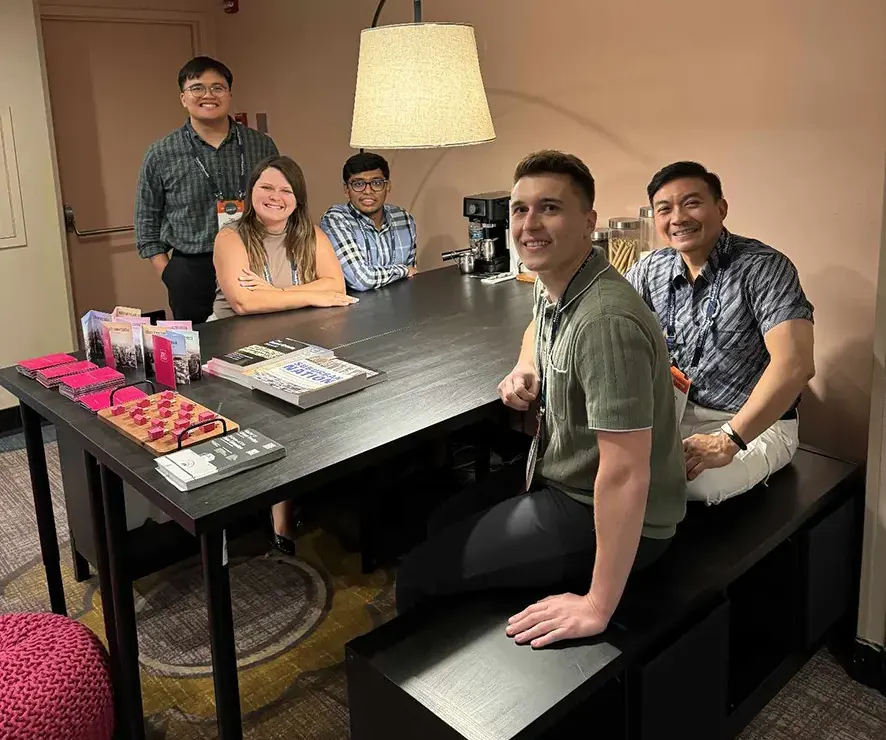
DPZ returned to CNU this year with the well-frequented #NotABooth lounge concept, featuring a table, seating, and a Cuban coffee station in place of the traditional booth setup seen amongst conference exhibitors.
Bustling conference goers would stop by the #NotABooth for great conversation, cafécito, and a moment to rest at an inviting space between sessions. The #NotABooth also served as DPZ’s home base to meet and network with new and old faces at the conference.
Panel Participation
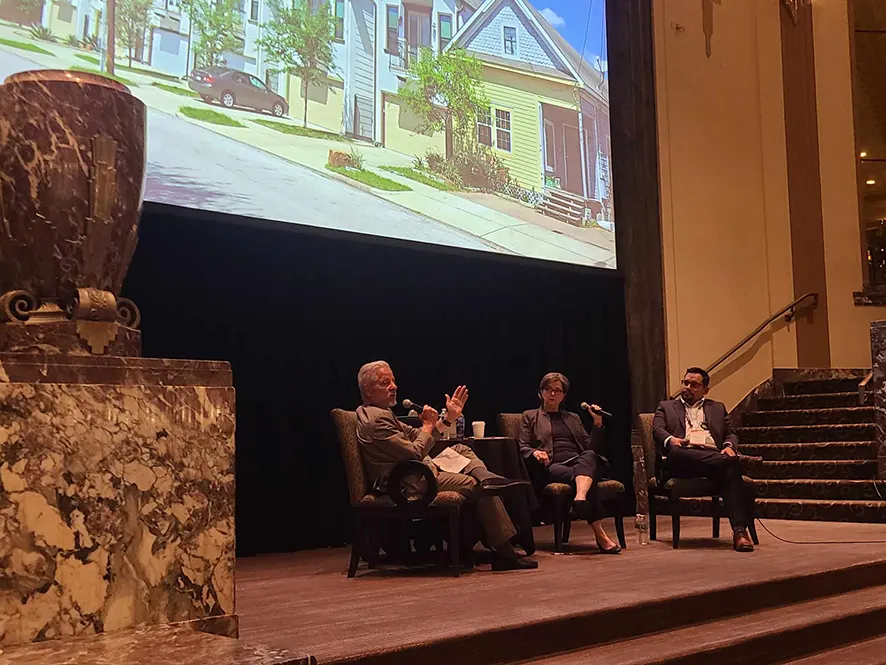
Andrés Duany, Margaret Brown (former Director of the City of Houston Planning & Development Department), and Abraham Zorrilla (Planner IV at City of Houston) during the Breaking Barriers in Urban Planning: Houston’s No Zoning Approach and Homelessness Session
Throughout the conference, sessions were led by a variety of experts across the industry. Many of these sessions were moderated by DPZers who helped with organization, Q&A, and insight via panel participation.
These panels included:
- Breaking barriers in Urban Planning: Houston’s No Zoning Approach and Homelessness: a conversation moderated by Andrés Duany and Fernando Pagés.
- Urban Growth Boundary: Bridging the urban/rural divide: featuring DPZ Partner Matt Lambert as a panelist.
- CNU Latino Open Session: featuring Fernando Pagés and Andrés Duany as panelists.
- A Restorative Response to the Unequal Impacts of Climate Change: featuring a panel of young New Urbanists, including DPZ’s Camille Cortes.
- Highway Transformation Manual and CNU Transportation Resource Forum: again featuring Camille Cortes.
- Pitch Your Project in Five Minutes or Less: organized by the National Town Builders Association (NTBA), including DPZ Partner Senen Antonio.
- Shelter from the Storm: Housing During Crisis: with panelist Camille Cortes.
- Recovering Main Street Architecture: featuring Judith Bell and Ben Northrup as key presenters.
- Closing Keynote: a conversation between Caros Moreno and DPZ Partner Marina Khoury.
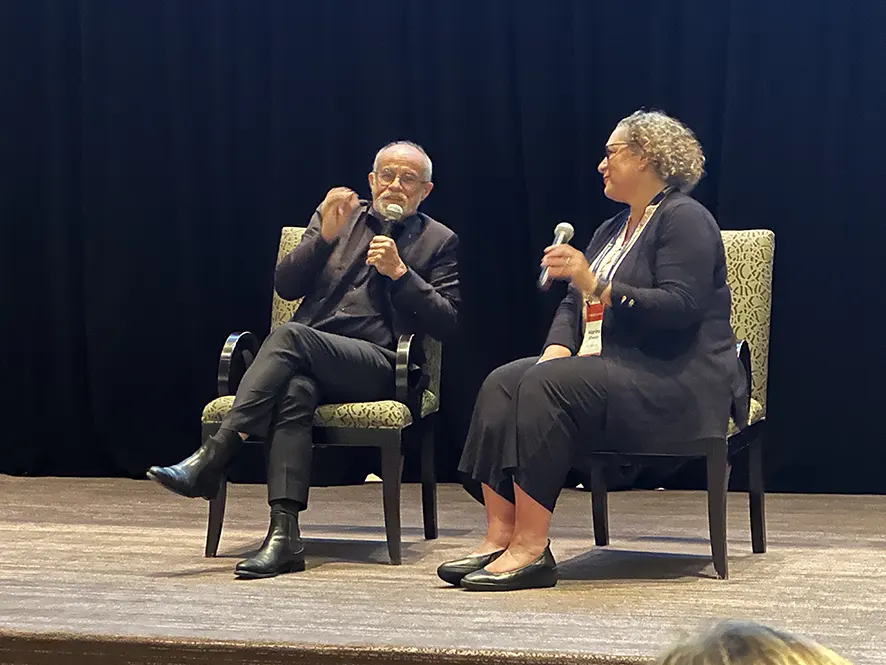
DPZ Partner Marina Khoury and Carlos Moreno (Associate Professor at the University of Paris) during the Closing Keynote: Frameworks for Restoration: The 15-Minute City and the Principles of New Urbanism
Recovering Main Street Architecture Session
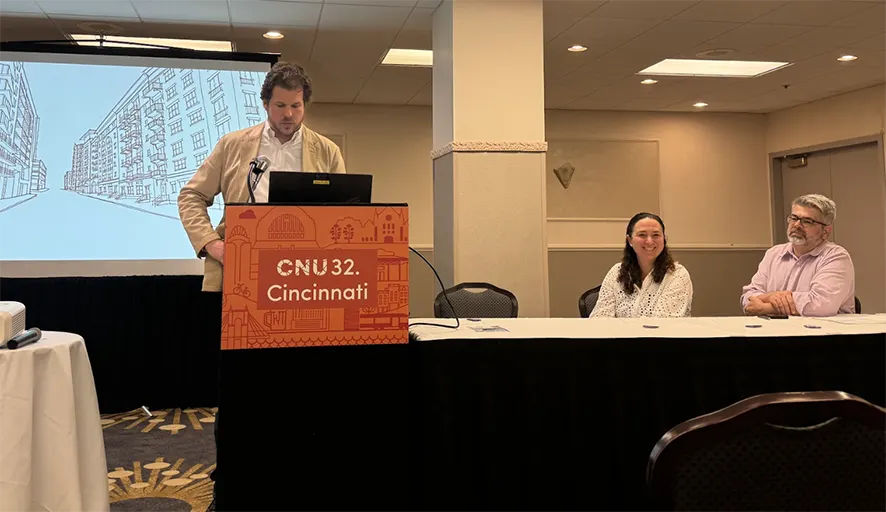
DPZ’s Judith Bell and Ben Northrup with Adam Bonosky (SWBR) at the Recovering Main Street Architecture session
Toward the end of the conference, DPZ’s Judith Bell and Ben Northrup teamed with UM graduate Adam Bonosky, an architect and senior planner at SWBR, on a session about recovering Main Street architecture.
Great strides have been made in codifying and designing good urbanism, but too many Main Streets fall short because of weak architecture. Understanding the correct approach to facade composition and the design of well-proportioned, inviting urban buildings helps to bridge that gap and make truly inspiring Main Streets with a strong pedestrian realm.
The learning objectives included:
- Identifying appropriate pedestrian frontage types for a Main Street
- Describing the principles of facade composition for successful downtown streets
- Identifying essential and optional components of a shopfront facade
- Identifying appropriate metrics for design guidelines and codes
- Planning for Main Street pedestrian frontage improvements
All in all, CNU32 was a busy and successful conference with much to be learned from the beautiful downtown of Cincinnati.
